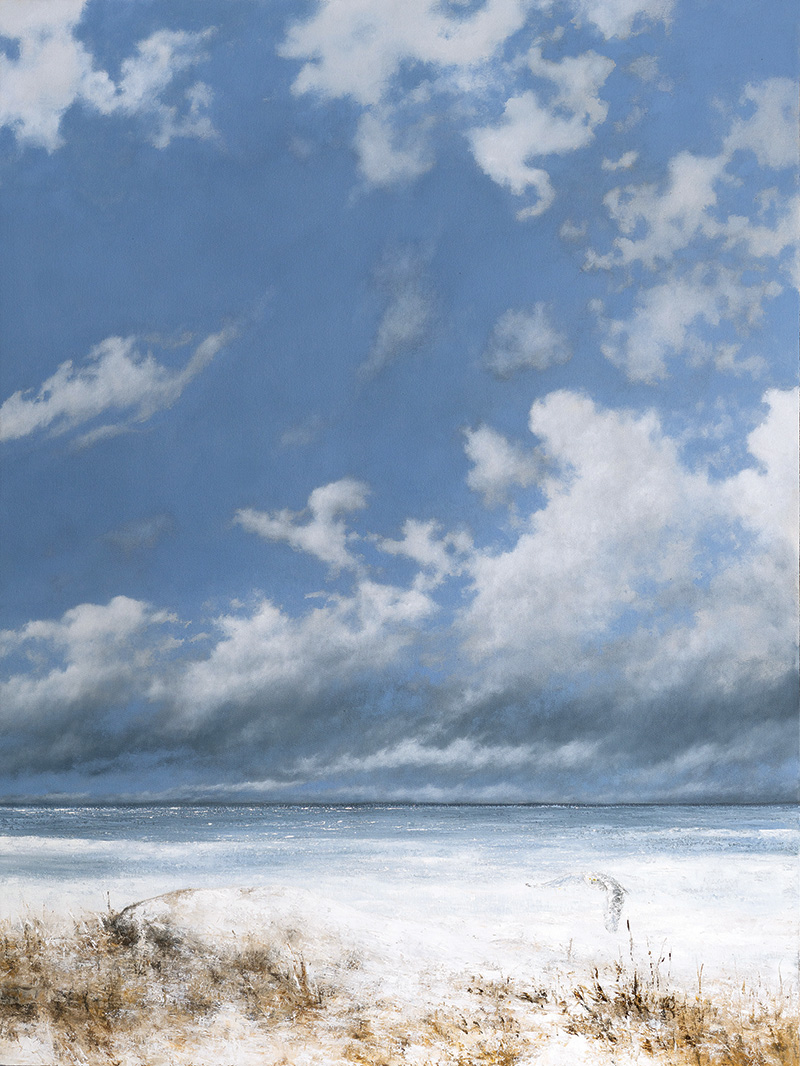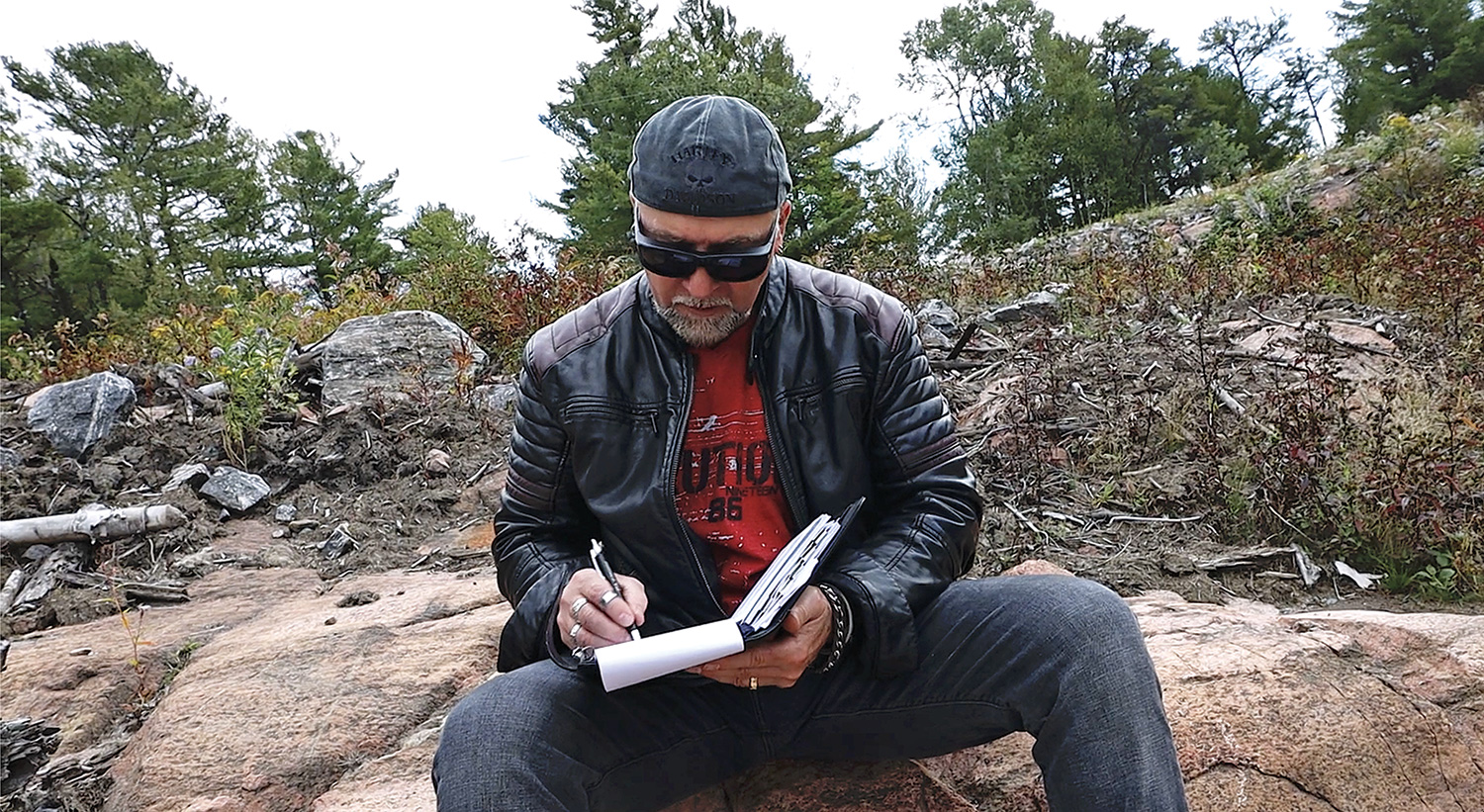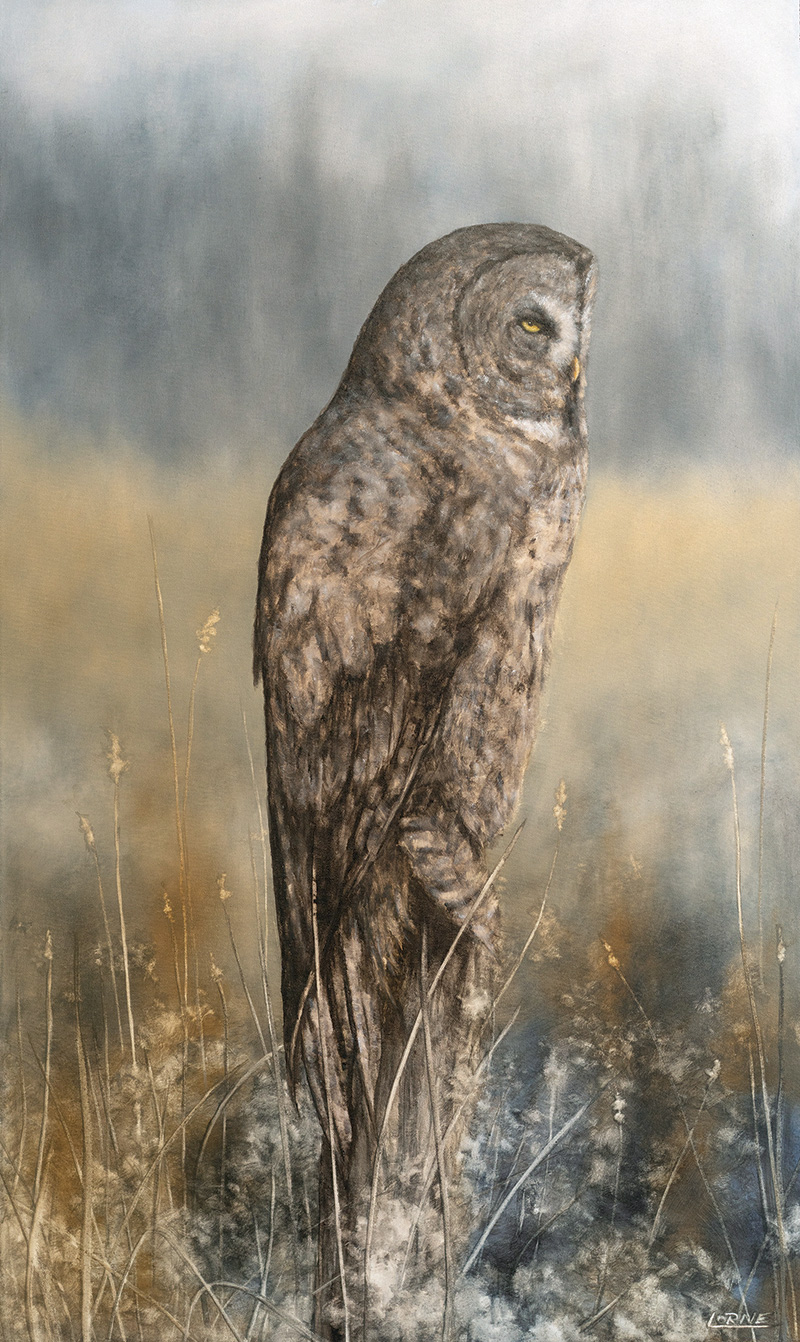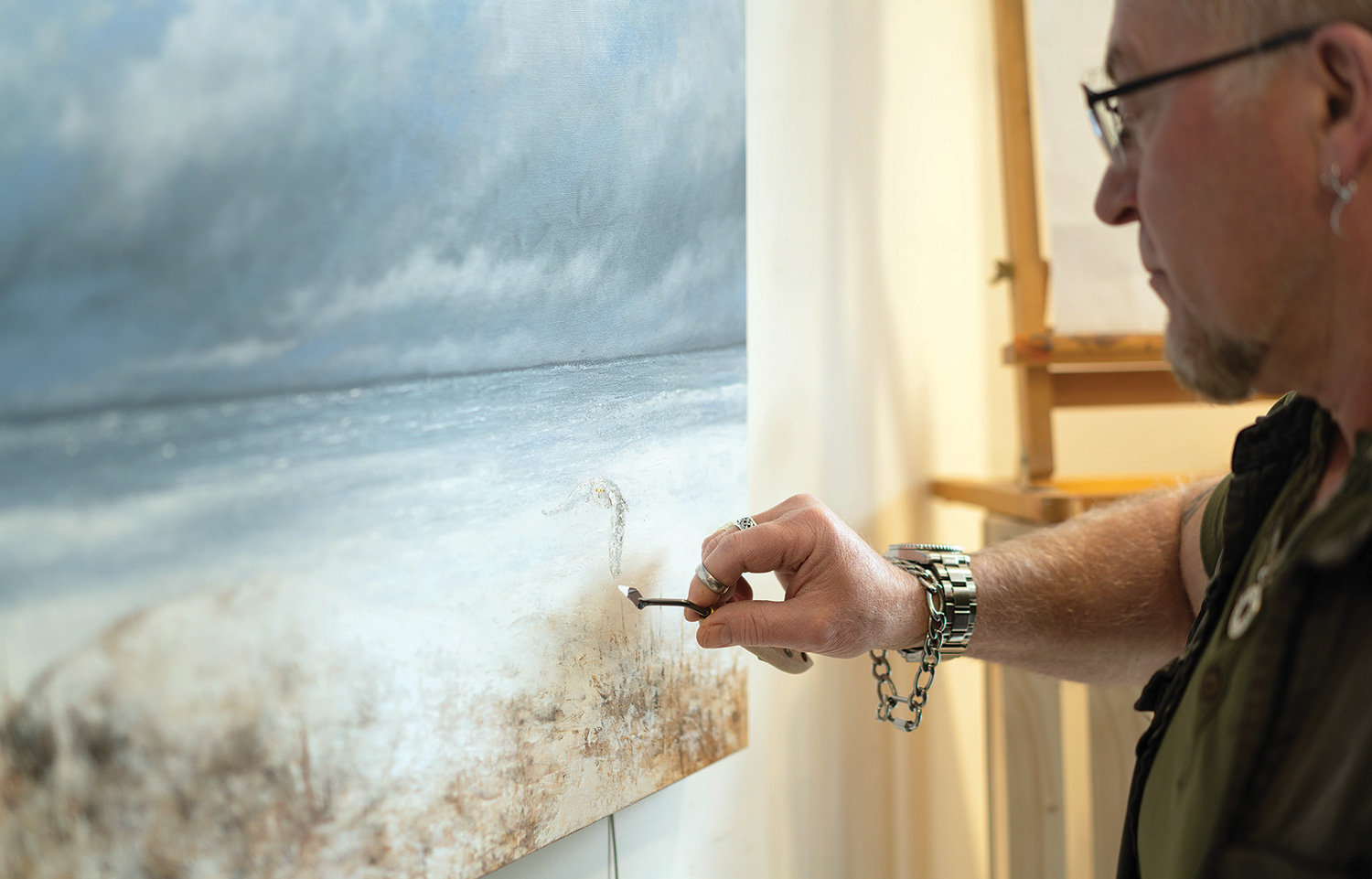Lorne McDermott is a self-taught master who paints by immersion—often literally.
By Laurie Stephens // Art by Lorne McDermott // Photography By Anya Shor
With moody surrealism and deep, textured hues, McDermott’s art reveals a love of water he developed at an early age.
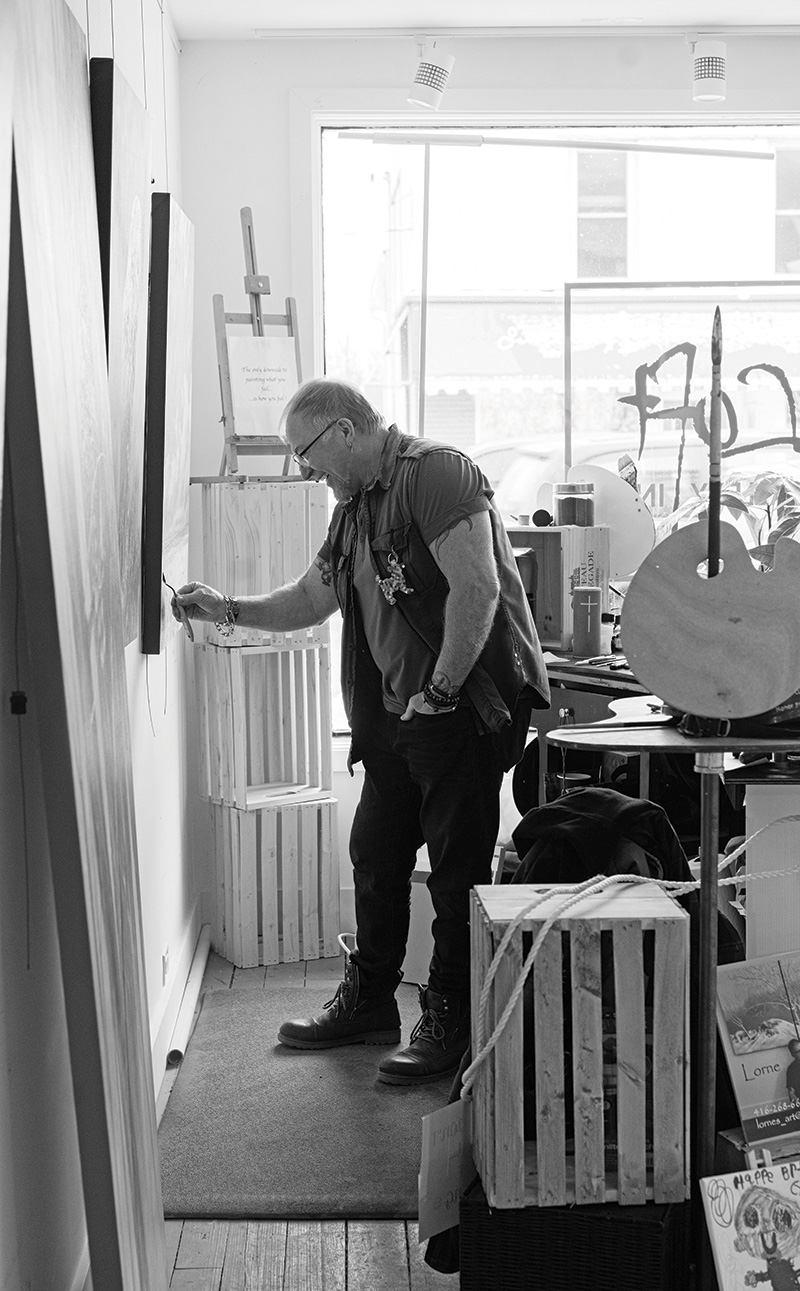
If you happen to see an old steel painter’s easel perched in the waves off the shores of Wasaga Beach, chances are it belongs to local artist Lorne McDermott.
When the Wasaga oil painter wants to get a feel for the water and sky that he’s painting, he’ll walk out into Georgian Bay, set up the easel, sit on a stool and start sketching.
“I’ll feel the wind, I’ll feel the water on my feet and on my legs, and it gives me that sense of feeling, which is so important to me,” says McDermott.
Years ago, one of his neighbours informed him that he had left behind his treasured easel in the Bay. But there was no cause for panic. It is made of tube steel, has a wide base and is very durable.
“It just sits down in the rock and in the water, and it doesn’t go anywhere. So, I was very confident it would still be there the next day.”
The easel is McDermott’s constant companion as he searches out new landscapes, wildlife or other subject matter to paint. A motorcycle enthusiast—he estimates he’s ridden between 200,000 and 300,000 kilometres across North America in search of inspiration—he’s now designing a stand that will be mounted to the back of his Harley-Davidson. “I’ll pop it up and be able to sketch right from the bike without having to go anywhere.”
When not sitting in the water or astride his Harley, McDermott can be found painting in Loft Gallery in Thornbury as one of their exclusive artists in residence. A self-taught painter who moved to Wasaga Beach 11 years ago from Maple, Ontario, his work features a wide variety of styles and subjects on large canvases.
The tools for McDermott’s creative process consist of items he can carry on a motorcycle: a sketchbook and a simple pencil.
Many of his landscapes reveal a love of water he developed at an early age when his mother brought him to this area when he was a child. These pieces are quintessential Georgian Bay scenes, featuring the deep, textured hues of blue and grey of the Bay, sweeping clouds, and the occasional rock outcropping with sparse pines that trace the wind.
Other pieces delve into moody surrealism and explore the relationship between light and dark in shades of brown, gold, tan and grey. Still others depict realistic images of wildlife in their natural habitat.
Before he puts brush to canvas for a landscape, his creative process usually begins with a sketch at the scene he wants to capture. He uses items he can easily carry on the bike: artist’s sketching paper, a simple pencil, water-soluble paint, watercolours or water-soluble graphite.
He seldom uses photographs as a base for his creation. If he must take a photo, he will sketch it for its lines and then discard it.
“Photographs lie; they give you colours that aren’t accurate. They give you a split second of what you would be feeling if you sat there for 20 minutes. I’m more about trying to put what I felt, translate that into the image, and if I can make people feel what I feel, that’s more important to me than every little line.”
While he’s proficient in watercolours and acrylic, he much prefers using oil paints, comparing the process to icing a cake or spreading peanut butter and jam on a sandwich.
“Oils on a canvas are like playing with food,” he says. “You have fun with it, you have to become a part of it.
“If I could rebuild the sky, water and land with the palette in my mind, then you would see what I see and feel what I feel.”
“I always tell people that there’s a conversation that happens between the canvas, the paint and the artist. And if you’re in there playing, then that’s perfect.”
McDermott has long had a creative streak. He recalls sketching on serviettes at restaurants when he was 10. Since then, he has dabbled in art most of his life while earning a living in a variety of professions: banking and other corporate positions, graphic design (he was a graphic artist for Hallmark Cards for nine years) and art gallery owner.
He also taught painting at the prestigious McMichael Gallery in Kleinberg, Ontario, even though he himself has never taken a formal art class. He says he’s not a fan of lessons for his own development as an artist because he’s more interested in learning his own way than someone else’s.
His paintings depict a wide range of emotion, and he acknowledges that they reflect how he was feeling at the time of creation. If his mood is positive and uplifting, then the painting might reflect more of that. As he puts it, “If I could rebuild the sky, water and land with the palette in my mind, then you would see what I see and feel what I feel.”
He has stuck two quotes that reflect his creative process to his workstation at Loft Gallery. The first is, Study what you see, but paint what you feel. The second is, The only problem with painting what you feel is how you feel.
He admits he sometimes “gets stuck” on how he’s feeling and how the mood comes forward in his work. But when someone else connects with his painting, that makes it worthwhile. At the gallery that happens frequently, he says.
“When someone comes in and says, ‘Wow, that painting makes me feel this way,’ that’s fantastic.”
McDermott’s works are now being collected both nationally and internationally. His motto, “Live your best life,” motivates him to continue to push his boundaries as an artist, to appreciate the success he has had and to continue to produce masterful creations.







